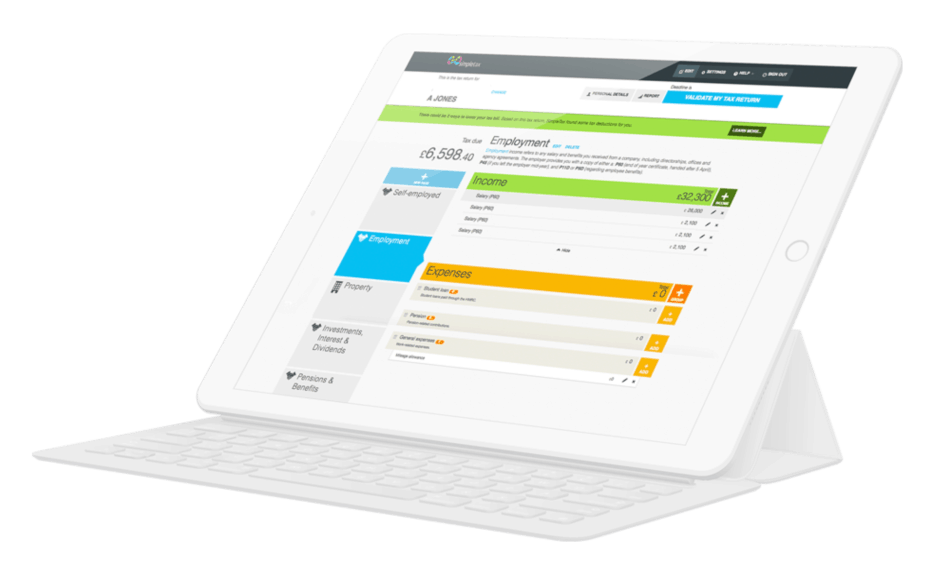Sole Traders: What Can You Claim On Your Self Assessment?
When it comes to the Self Assessment tax return, claiming expenses is a difficulty for most. Whilst the issue of scanning and logging receipts is easily solved by snapping them on the go with your smartphone,…
5 Minute Read
Last Updated: 23rd March 2023
When it comes to the Self Assessment tax return, claiming expenses is a difficulty for most. Whilst the issue of scanning and logging receipts is easily solved by snapping them on the go with your smartphone, there’s still the struggle of figuring out which expenses you can claim.
We’ve simplified the rules around what exactly you can offset, so you’ll be fully clued up before the Self Assessment tax return deadline rolls around.
Allowable expenses
The expenses will need to be allowable, so they can’t be money you’ve taken from the business and spent on purchases unrelated to it.
There will be items used both privately and for business, such as your mobile phone. With these, you claim only for the business use, meaning you’ll need to divide the cost using a fair and reasonable method. You can also offset expenses which you purchased before you began trading – this includes both revenue expenses and capital allowances.
Revenue expenses
These are classed as ‘day-to-day’ expenses or running costs. When filling out your Self Assessment tax return, there’ll be nine different headings to class these under:
- Office costs, such as stationery
- Travel expenditure, like fuel and fares
- Clothing expenses, which is often uniforms
- Staff costs, such as salaries
- Things you buy to sell on, like stock
- Financial costs, for example, insurance charges
- The cost of business premises
- Legal and professional fees
- Advertising or marketing, like website costs
Capital allowances
When you invest in assets for your business – such as equipment – you claim tax relief on the upfront cost and subsequent depreciation through capital allowances. These assets will need to have a ‘shelf life’ of at least two years in the business. Cars are included, although allowances for these are calculated slightly differently.
You may be able to claim the full value of an item, providing it qualifies for the Annual Investment Allowance (AIA). There are certain items that can’t be claimed with the AIA – those owned and used previously or given to the business, as well as vehicles.
Some plant equipment and machinery can be claimed as ‘First Year Allowances’ during the first year of its purchase. This can be claimed on top of AIA as they don’t contribute towards the AIA limit. There’s also ‘writing down allowances’, which is where a proportion of the item’s value is deducted each year. This is particularly useful if you’ve reached the AIA limit, or the item doesn’t meet the criteria.
You can learn more about capital allowances in this handy guide.
Working out expenses
Calculating your costs can be particularly difficult when only part of an expense is claimed. This is where simplified expenses are useful; they save you time by using flat rates.
There is also a £1,000 tax-free allowance for property or trading income that can be used in place of deducting expenses and other allowances.
Even with simplified expenses, completing your Self Assessment tax return can feel overwhelming. GoSimpleTax can help – our Self Assessment software works out the numbers, adjusting the tax owed whenever you enter any data.
Let GoSimpleTax do the hard work for you. Register for a 14-day free trial today to see the benefits in action.
Blog content is for information purposes and over time may become outdated, although we do strive to keep it current. It's written to help you understand your Tax's and is not to be relied upon as professional accounting, tax and legal advice due to differences in everyone's circumstances. For additional help please contact our support team or HMRC.
How to keep track of your side hustle income and expenses
16 Apr 2024
12 things business partners should know about Self Assessment
15 Apr 2024
Everything you need to know about payments on account
31 Mar 2024
How GoSimpleTax Works
Register
Simply register for free with your full name and email address.
Select Your Income
Select the income you receive and follow the hints and tips for potential tax savings.
Validate Your Information
Validate your personal information and submit directly to HMRC to get confirmation in just seconds.

Work Anywhere, With Any Device
Gone are the days of fretting over a calculator surrounded by scraps of paper at the eleventh hour.
GoSimpleTax’s tax return software uses the information you upload in real time to calculate your income and expenditure, working out the tax you owe and sending you helpful notifications when there’s the possibility of a mistake.
"The software is intuitive and proved very easy to navigate. I found the whole process refreshingly simple. I saved a lot of money too!"
Steve J.
Ordained Presbyter
"Easy to use and value for money. Everything you need to do your tax."
Gordon J.
Self Employed
"It fills in all the forms and sends them to the Inland Revenue. Not expensive either. Takes the stress out of doing your tax return online."
Ross G.
Team Rector
